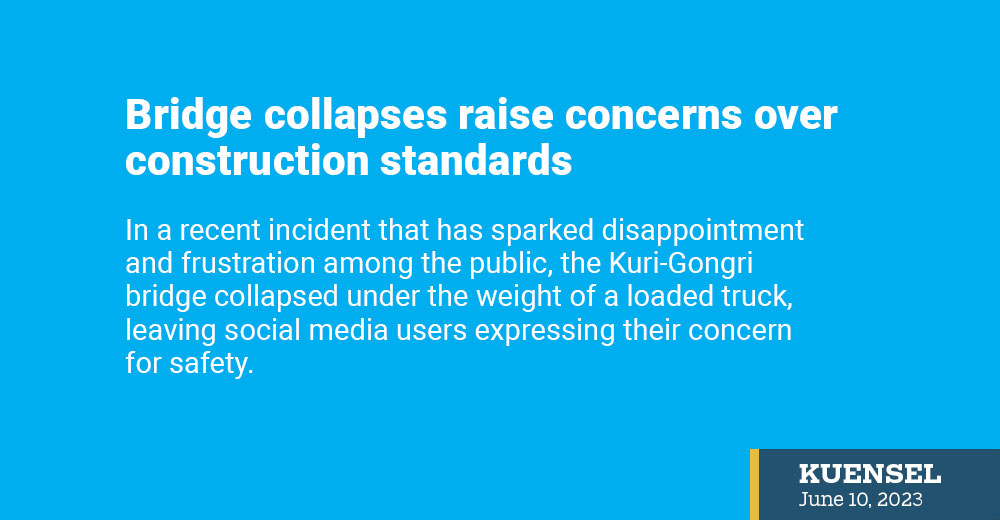KP Sharma
In a recent incident that has sparked disappointment and frustration among the public, the Kuri-Gongri bridge collapsed under the weight of a loaded truck, leaving social media users expressing their concern for safety.
This marks the second bridge collapse in the country within a span of just three months, further raising doubts about the construction standards of Bhutan’s bridges.
The collapse of the bailey bridge under construction over Maokhola in Chhudzom Gewog, Sarpang, on March 3, was attributed to the use of old panels, highlighting potential issues with the infrastructure. These recurring incidents have prompted a growing sense of unease among the public and have drawn attention to the need for more stringent construction standards.
Responding to the public outcry, Infrastructure and Transport Minister, Dorji Tshering, defended the occurrence of bridge collapses, emphasising that such incidents are not uncommon and have happened in the past.
Minister explained that the frequency of these occurrences was not widely known in the past due to the lack of immediate information dissemination channels that exist today.
He also drew attention to the increasing size and load capacity of trucks, which play a vital role in developing economies by transporting raw materials and goods for various developmental projects. He acknowledged that one of the primary causes of bridge collapses is the mismatch between the capacity of the bridges and the carrying capacity of the trucks.
“Our bridges are designed to hold a maximum of 24 metric tonnes (MT), while our trucks now carry about 35 MT,” Minister said. He went on to point out that blaming the quality of raw materials and construction itself would be unwise, as it is evident that when a truck carrying 35 MT crosses a bridge with a capacity of only 24 MT, damage is likely to occur.
To address this issue, he revealed plans to increase the capacity of the new bridge at Kuri-Gongri from 24 MT to 35 MT, aligning it with the weight capacity of the emerging trucks. However, he emphasised that it is crucial not to solely rely on bridges to bear the burden of heavily loaded trucks of any size.
Currently, bridges in Bhutan carry a load capacity of only 110 MT, according to the Minister.
To ensure the efficiency and safety of bridge users, Minister stressed the need to increase the capacity of bridges in proportion to the growing size and capacity of trucks.
As Bhutan continues its rapid economic development, the government faces the challenge of constructing bridges that can handle the weight demands of modern transportation effectively.
The minister highlighted the need to prioritise the alignment between bridge capacity and the evolving needs of the country’s transportation sector.


